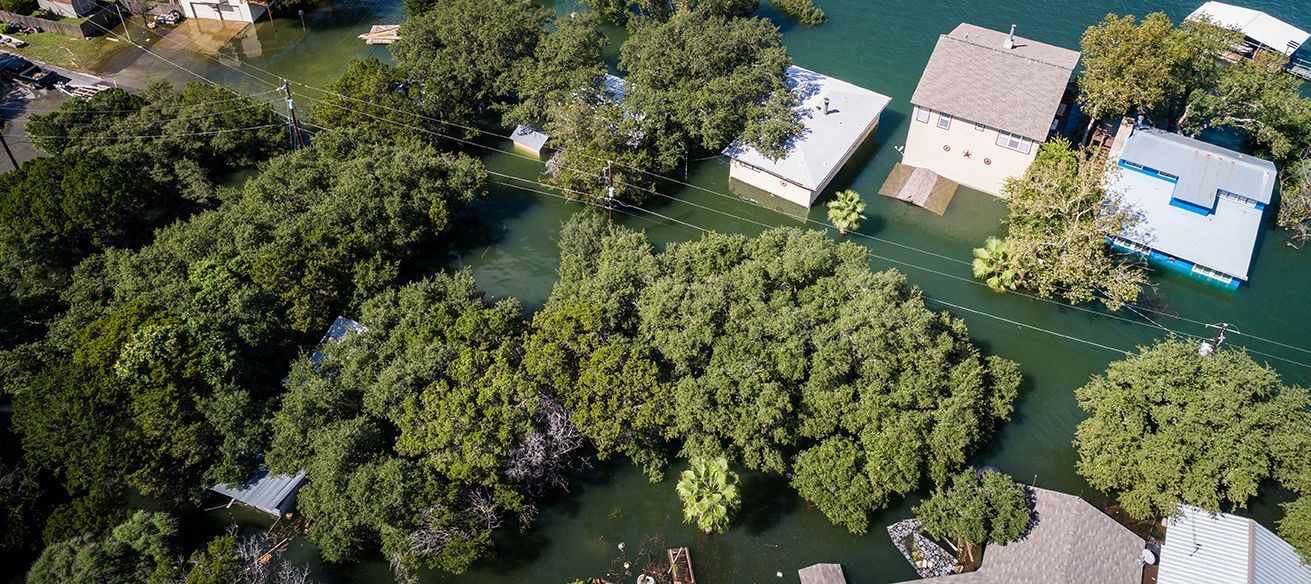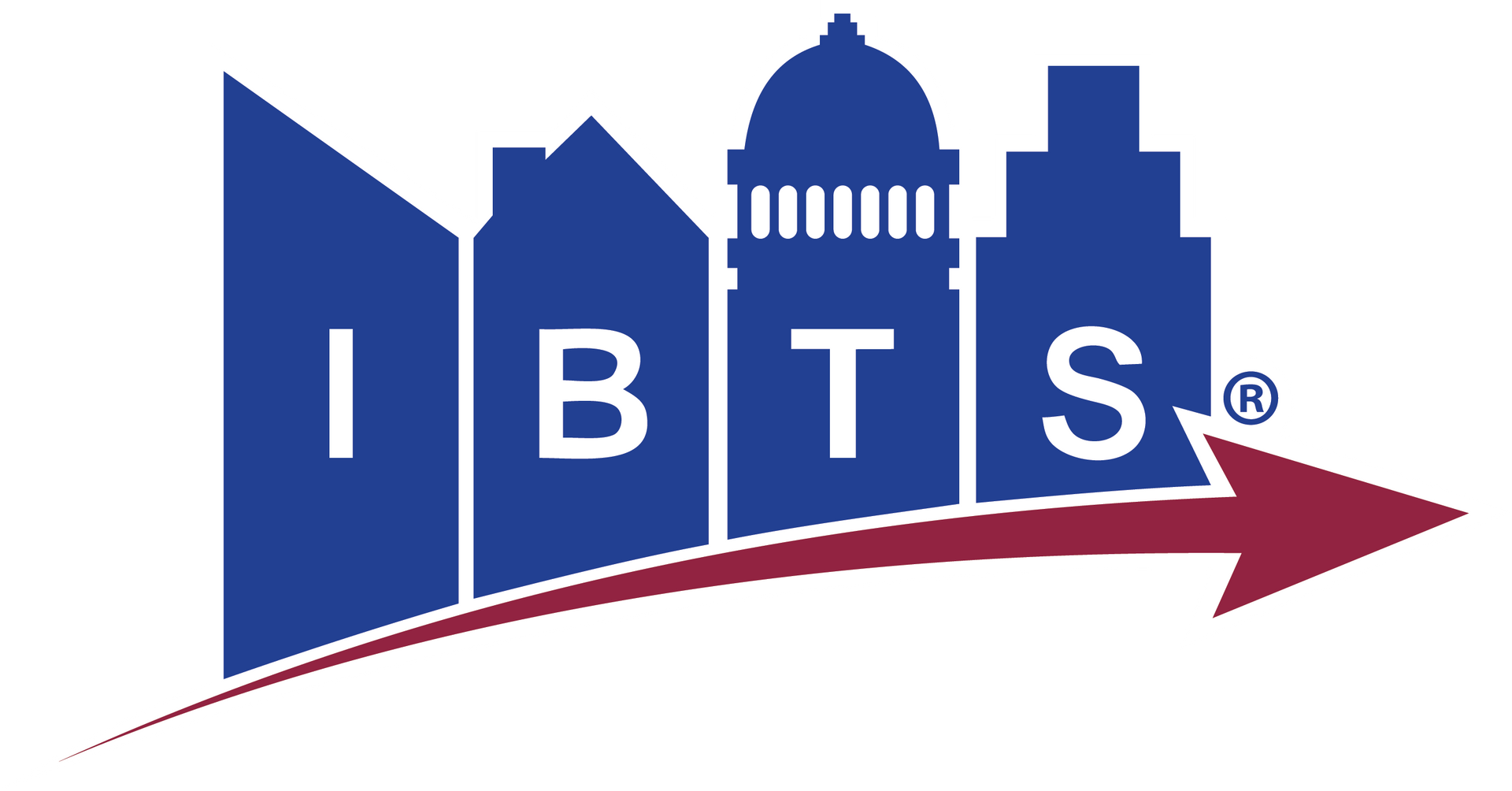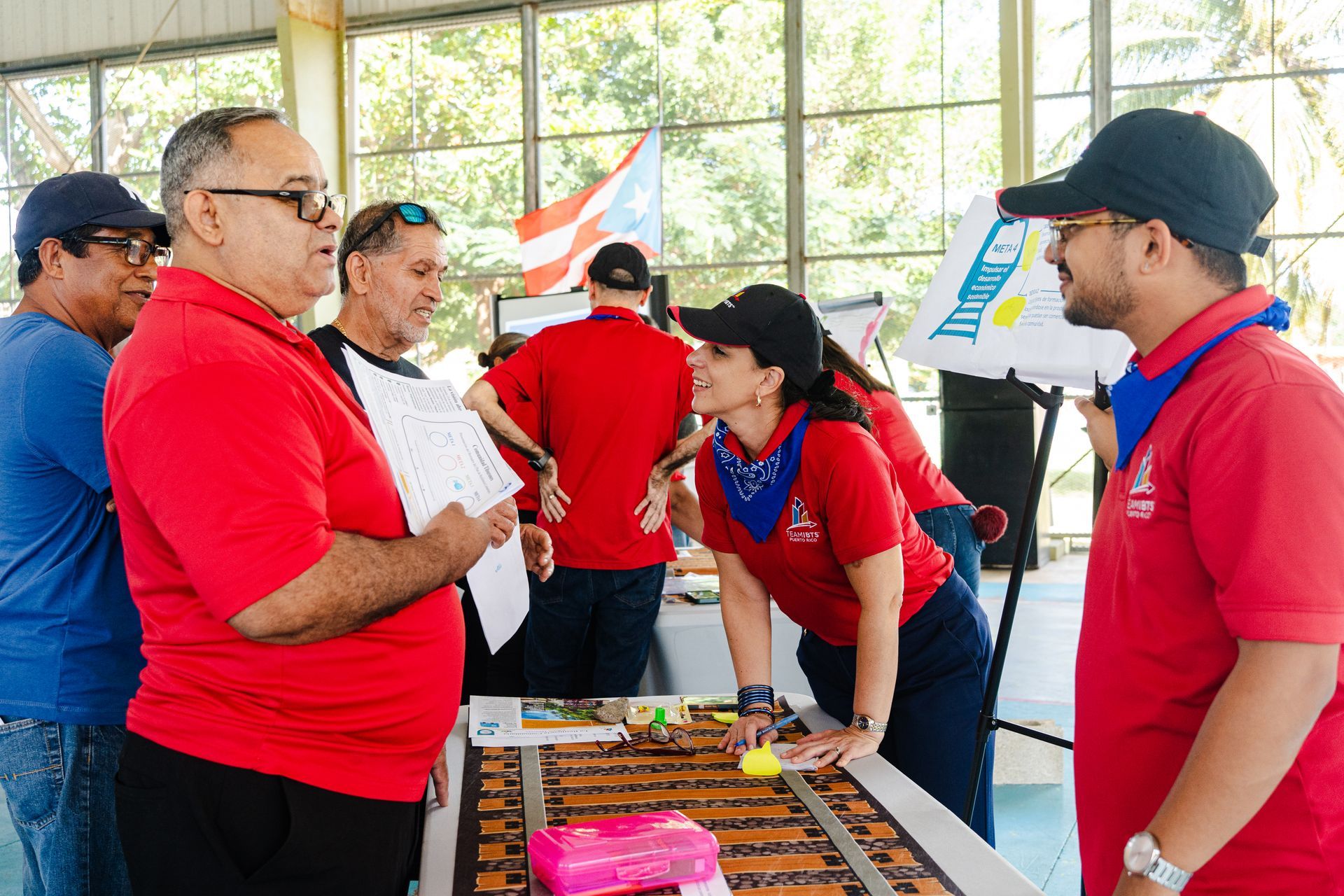Unlocking Best Practices in Decision-Making
Share this article:
On Aug. 27, 2024 IBTS CEO Anjuma Goswami Karkera delivered a special session at Experiencia Puerto Rico 2024, where she shared invaluable insights on ensuring transparency and compliance in decision-making processes.
The session was moderated by Víctor D' Aza – President of the Municipal League of the Dominican Republic and Commissioner of the Local Government Union (CGLU) of FLACMA.

Introduction
Hello everyone, it’s an honor to be here in beautiful Puerto Rico, surrounded by leaders who are making real differences in their communities.
My name is Anjuma Goswami Karkera, and I am the CEO of the Institute of Building Technology and Safety, IBTS. I don’t mean to turn this into a commercial, but for context, at IBTS we refer to ourselves as “American’s Nonprofit Engineering and Community Services firm. Our focus is on serving local, state and federal clients who share our passion for creating stronger, more resilient communities.
This morning, I want to address a topic that is all-too familiar to us all: innovation. I want to discuss some of the barriers we see when communities try to innovate, or what keeps them from doing so. I also want to provide some thoughts on how we work around those barriers.
I want to start this morning with a simple image: when you were a child, you may have played the game with two teams tugging at a rope or tug of war. On one side, you have the folks who believe in sticking with what’s tried and true—the traditional methods that have kept our systems running smoothly for years. They’re strong, steady, and grounded in what’s familiar.
On the other side of the rope are the innovators, full of energy, pulling towards progress, new ideas, and change. The tension between them is palpable, and sometimes it feels like all we’re doing is pulling against each other, with no clear winner — just a lot of back and forth.
Now it’s important to recognize that barriers to innovation exist in variety of forms:
- Organizational Culture: Many organizations are simply comfortable with the status quo and wary of new methods or technologies.
- Limited Resources: Financial constraints and lack of investment can stifle innovative projects.
- Bureaucratic Red Tape: Complex approval processes and regulations can slow down or block new initiatives. We’ve seen instances where Red Tape is “weaponized” specifically to kill off innovation!
- Risk Aversion: The fear of failure or the unknown can deter both leaders and teams from pursuing innovative ideas.
- Lack of Skills or Knowledge: Sometimes, the necessary expertise or training to implement new solutions is missing. Our workforce simply lacks the skills to “keep up,” so we stay where we are.
Going back to our analogy -- this tug of war is something we often see in our work at IBTS, especially when it comes to municipal building and facilities services. Tradition and innovation can feel like they’re at odds, each pulling in opposite directions. But what if we shifted our perspective?
From Tug of War to Crew Team
Now, imagine instead of a tug of war, we’re all in a boat, rowing together. A crew team. Each of us has a role, and if we row in sync, we move faster and more efficiently. It’s not about one side winning over the other—it’s about moving forward together.
This is the approach we need to take, especially here in the Caribbean, where the challenges are unique and pressing. The threat of hurricanes, rising sea levels, and the need for resilient infrastructure aren’t just hypothetical—they’re realities that communities across the region face every year. So, how do we honor the strengths of our traditional practices while also embracing the innovations that will help us meet these challenges head-on?
Personal Perspective: Balancing Innovation with Personal Freedoms
Before joining the Institute for Building Technology and Safety, I spent years in the intelligence community, where we also grappled with the tension between innovation and tradition. I culminated my career as a member of the Senior Executive Service. My agency was responsible for gathering, analyzing, and exploiting Geospatial intelligence, or GEOINT to ensure that U.S. and allied warfighters, and their decision makers, can understand where adversaries are and what they are doing … in real time..
We supported military campaigns, including playing a pivotal role in the 2011 raid on the Osama bin Laden compound in Abbottabad, Pakistan (someone had to locate the house, after all). We also support domestic and international humanitarian and disaster relief efforts, working in conjunction with FEMA and others. These partnerships have helped bring stability to hard-hit communities facing every kind of natural disaster, spanning the likes of hurricanes, earthquakes and tornadoes, as well as humanitarian crises like the 2014 Ebola epidemic.
It was an incredibly gratifying chapter of my career.
Now when it came to innovation, one of the biggest challenges we faced was with satellite surveillance technology, especially when coupled with the evolving field of artificial intelligence. This literally gave us the ability to monitor global threats in real-time—a huge leap forward. But with that power came a significant concern: how do we balance this incredible tool with the need to protect personal freedoms and privacy?
It is a very tough balancing act. On one hand, we needed the data to keep people safe. On the other, we had to ensure that this technology wasn’t misused, that we weren’t infringing on the very freedoms we were trying to protect. The solution wasn’t about choosing one side—it was about bringing both perspectives together.
While the details of this instance is not public, the framework of partnership is the same. I am proud to say that our nation’s leaders have established clear laws, guidelines, and oversight, to ensure that we use this powerful tool responsibly and in a way that safeguard individual freedoms, especially at home.
Bridging Tradition and Innovation in Building Services
The lessons I learned about innovating in the intelligence world apply just as much here, in building and facilities services. We’re not talking about throwing out what’s worked in the past; we’re talking about enhancing it with new tools and ideas.
Smart Building Technologies
Let’s take the way we maintain our public buildings. Traditionally, we’ve relied on scheduled checkups and repairs—a method that’s served us well for decades. But now, with smart building technologies, we have the opportunity to monitor building systems in real-time. Imagine a public building where the lights, heating, and cooling systems automatically adjust based on how the space is being used. It’s about giving our facilities teams better tools—not replacing their expertise but making their jobs easier and more effective.
Developing and Meeting Modern Building Codes
Another area innovation is critical is in developing and complying with modern building codes. Here in Puerto Rico and across the Caribbean, we know the importance of building structures that can withstand extreme weather. Traditional building methods have been honed over centuries to be more survivable in hurricanes, but building codes need to evolve with them. They need to include resilience, energy efficiency and sustainability measures, which are crucial as we deal with climate change. They ought not require the use of antiquated materials, means and methods. This is just another way of killing innovation.
Sustainable Energy Retrofits
Speaking of modern standards, one of the biggest opportunities for innovation is in sustainable energy. Retrofitting older municipal buildings with solar panels or other resilient systems isn’t just about meeting codes—it’s about leading by example. The Caribbean region is blessed with abundant sunlight and harnessing that energy can drastically reduce costs and environmental impact.
As we speak, the US Department of Energy is installing solar panels on the “last mile homes” right here in Puerto Rico – US citizens who are farthest grom the electrical grid and in locations where their energy supply is most vulnerable. The challenges are immense. The result? Lower energy bills, a smaller carbon footprint, and a model for other buildings to follow. The key was collaboration— the Department of Energy, Puerto Rican government and local leaders, engineers, quality assurance crews, and individuals charged with educating homeowners with basic skills to operate and troubleshoot their new solar systems. Everyone had to work together to find solutions to innovate.
Lessons Learned: Addressing Barriers to Innovation
As we strive to innovate, let’s revisit those barriers that hinder progress. Here are some key takeaways for overcoming these obstacles:
1. Overcoming Resistance to Change: Resistance to change is a common challenge, as people often prefer the familiarity of traditional methods. To address this, it's crucial to involve stakeholders early in the process and clearly communicate the benefits of innovation. Building a shared vision and demonstrating how new methods align with long-term goals can help ease concerns and foster acceptance.
2. Navigating Limited Resources: Financial constraints can limit the ability to pursue innovative projects. To manage this, prioritize initiatives based on their potential impact and seek out diverse funding sources, including grants and public-private partnerships. Efficient use of available resources and exploring phased implementation can also help stretch limited budgets.
3. Streamlining Bureaucratic Processes: Bureaucratic red tape can slow down or block innovative efforts. Work towards simplifying approval processes by collaborating with regulatory bodies and advocating for more flexible policies. Reducing complexity in procedures can accelerate the implementation of new ideas and make it easier to bring innovations to life.
4. Mitigating Risk Aversion: Fear of failure can deter both individuals and organizations from pursuing new ideas. Encourage a culture that embraces experimentation and learning from setbacks. By framing risks as opportunities for growth and celebrating incremental successes, you can help shift attitudes towards a more proactive approach to innovation.
5. Bridging Knowledge Gaps:
A lack of skills or knowledge can hinder the adoption of new technologies. Invest in training and professional development to ensure that your team is equipped with the necessary expertise. Partnering with educational institutions or bringing in external experts can also help bridge these gaps and support the successful implementation of new solutions.
If we can address these barriers together, we will be rowing in sync, towards a future where innovation is embraced and together we can build better, stronger, and more resilient communities in the Caribbean and around the world.
Thank you.





